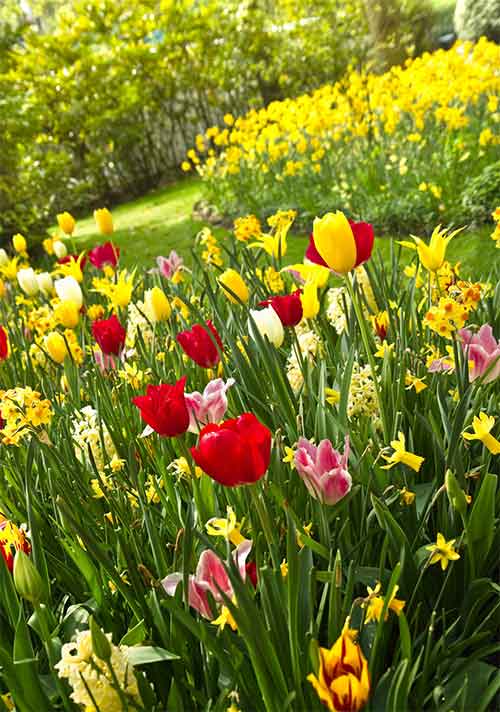
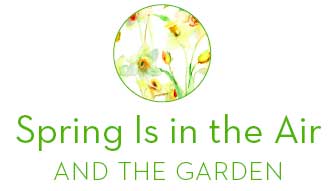
As the years tick by, I increasingly believe that the bears have the right idea regarding winter: a long nap sounds like an excellent plan. But now that spring is here, the days of hibernation are over. Now is the time to chase away the last of the winter doldrums by GETTING OUTDOORS AND GETTING YOUR HANDS DIRTY. Here are some gardening pointers for doing just that.
TIDY THINGS UP
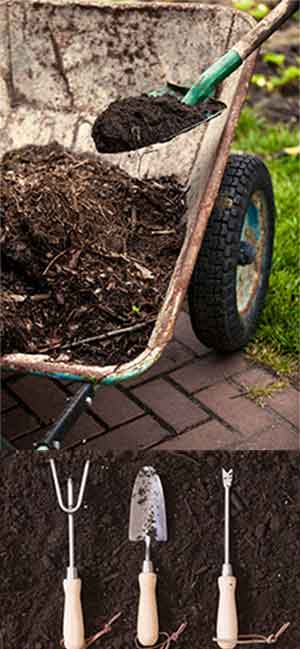
A GOOD SPRING CLEAN-UP IS A MUST TO AVOID EVEN MORE WORK LATER IN THE SEASON. It is difficult to rake dead leaves and other debris from garden beds once the new growth has begun in earnest. This results in broken shoots, damaged leaves, uprooted seedlings, loss of blooms, and other unhappy situations, so why not do it now? Besides, a good spring cleaning is good for your garden, good for your health, and good for your soul. If you did not do so last fall, cut back spent foliage from last year’s perennials and hardy grasses to make way for the new growth.
CLEANING YOUR GARDEN BEDS ALSO GIVES YOU A CHANCE TO GET A HEAD START ON WEEDING. Check the internet for images of common weed seedlings if in doubt. As a general rule, if I don’t know what something is, I leave it be and keep an eye on it. You can always pull it out later. Of course, anyone can identify grass coming up where it shouldn’t, so get it now before the root system becomes too entrenched. When it comes to weeding, don’t be lazy and environmentally callous by resorting to blanket applications of chemicals. Herbicides are toxic not only to weeds, but also to garden plants, streams, beneficial pollinators, wildlife, pets, and people. I make it a point to avoid using chemicals in my own garden and those of clients. You should too.
Early spring (before the emergence of leaves) is also the best time to remove damaged branches from shrubs and trees, as well as to do any necessary corrective pruning, since now is when a plant’s branching structure and architecture is most clearly visible. Just remember that by trimming or pruning flowering shrubs now, you may be removing this year’s flowers as well, so do so judiciously. For major pruning and shaping of most flowering shrubs and trees, it is generally best to wait until after flowering.

FEED & MULCH
Once things are cleaned up, why not pamper your soil as well? GOOD SOIL IS THE FOUNDATION UPON WHICH THE ENTIRE GARDEN IS BUILT. Rather than relying on chemical fertilizers, I suggest going the more environmentally conscious, old-school route—composted manure. This product is available by the bag at garden centers everywhere. A light application of composted manure as a top dressing to garden soils works wonders. If you prefer, you can also apply it as a liquid. Go online and look up “compost teas” for details. If you have access to horse, sheep, or cattle manure, that’s great too. Just be sure such products have been composted properly. If too fresh, it is not only nasty
to handle, but you can literally burn your plants with an excess of nutrients. Of course, if you have your own compost pile, by all means, use it. And never attempt to compost dog or cat waste for reasons too numerous and gross to mention. After applying your top dressing of composted manure, water it in. Your plants will thank you. ONCE THE GARDEN IS CLEANED AND FED, IT’S TIME TO MULCH. The advantages of mulching are many. A two- to three-inch deep covering of mulch preserves soil moisture, discourages the growth of weeds, moderates soil temperature, and feeds the soil as it breaks down. Mulching also makes your garden look nice. I always suggest using a natural shredded mulch that is fine in texture as opposed to large, chunky wood chips. The latter takes forever to break down and makes raking, planting, and other garden chores more difficult. I also find a finer textured mulch more aesthetically pleasing. Such mulches are available for purchase in bags at most garden centers, or you can check your local listings for bulk landscape suppliers. I always suggest using a natural-colored mulch rather than ones that use artificial dyes. Again, the fewer chemicals you use in your garden, the better it is for your garden’s health, your own health, and that of the planet. Also, nothing can transform an otherwise lovely garden into a Burger King parking lot more quickly than the installation of artificially colored red mulch. Yikes!
A SPLASH OF COLOR
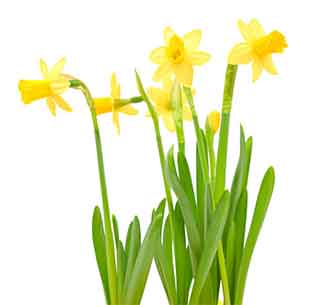 If you did not get around to planting bulbs last fall, it’s not too late to enjoy some bright outdoor blooms this spring. Starting as early as late March or early April, local nurseries, farm stands, and garden centers sell potted daffodils and tulips that are perfect for popping into containers or (if the soil is workable) for installing directly into the garden. An eight- to ten-inch plastic pot or waxed cardboard container of six to ten ready-to-bloom bulbs can usually be purchased for under $10—depending upon bulb size, quantity, variety, and place of purchase. True, this option is considerably more expensive than planting bulbs in the fall, but it does allow for a quick spring fix and gives one the satisfaction of pulling a harmless fast one over on Mother Nature. It is best to purchase these ready-to-bloom bulbs just before the flowers open to allow for the maximum enjoyment time.
If you did not get around to planting bulbs last fall, it’s not too late to enjoy some bright outdoor blooms this spring. Starting as early as late March or early April, local nurseries, farm stands, and garden centers sell potted daffodils and tulips that are perfect for popping into containers or (if the soil is workable) for installing directly into the garden. An eight- to ten-inch plastic pot or waxed cardboard container of six to ten ready-to-bloom bulbs can usually be purchased for under $10—depending upon bulb size, quantity, variety, and place of purchase. True, this option is considerably more expensive than planting bulbs in the fall, but it does allow for a quick spring fix and gives one the satisfaction of pulling a harmless fast one over on Mother Nature. It is best to purchase these ready-to-bloom bulbs just before the flowers open to allow for the maximum enjoyment time.
Of these, my favorites are daffodils. They are among the most hardy, pest-resistant, fool-proof, and cheerful plants one can imagine. If you use them in a container outdoors or as the centerpiece on a table, wait until the flowers are gone, then transfer them to a sunny, well-drained spot in the garden. This will ensure an increasing floral display for many springs to come.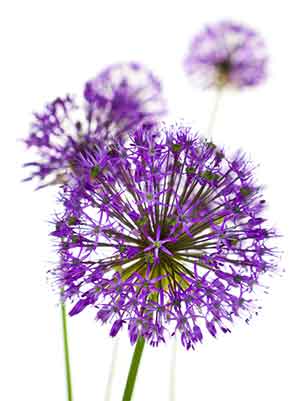 Tulips, on the other hand, are gorgeous yet fleeting things. Few other flowers can match them for sheer umph, but most varieties will not reliably return the following year. As such, I treat tulips as early season annuals. Unlike daffodils, they are a favored treat for deer, voles, squirrels, rabbits, mice, chipmunks . . . you get the idea. That said, if you are looking for a short but sweet burst of bright pink, red, or purple—and are not troubled by critters—then by all means, indulge. For a punch of yellow or white (and to a lesser extent orange, peach, and even salmon), I recommend going with daffodils. I have also on occasion seen alliums (ornamental onions with deer-resistant, pom-pom blooms in shades of purple, pink or white) available in ready-to-bloom in pots as well. These, however, usually cost considerably more than the tulips and daffodils. As such, I have always installed alliums in the fall. With all bulbs, do not remove the foliage until the leaves have turned completely brown. To do so is to rob the bulbs of nutrients needed for growth and next year’s display.
Tulips, on the other hand, are gorgeous yet fleeting things. Few other flowers can match them for sheer umph, but most varieties will not reliably return the following year. As such, I treat tulips as early season annuals. Unlike daffodils, they are a favored treat for deer, voles, squirrels, rabbits, mice, chipmunks . . . you get the idea. That said, if you are looking for a short but sweet burst of bright pink, red, or purple—and are not troubled by critters—then by all means, indulge. For a punch of yellow or white (and to a lesser extent orange, peach, and even salmon), I recommend going with daffodils. I have also on occasion seen alliums (ornamental onions with deer-resistant, pom-pom blooms in shades of purple, pink or white) available in ready-to-bloom in pots as well. These, however, usually cost considerably more than the tulips and daffodils. As such, I have always installed alliums in the fall. With all bulbs, do not remove the foliage until the leaves have turned completely brown. To do so is to rob the bulbs of nutrients needed for growth and next year’s display.
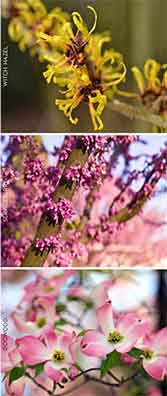 As far as spring-blooming perennials go, look for bleeding heart (Dicentra), foxglove (Digitalis) and hellebores (Helleborus). All of these cheery spring bloomers are perfect additions to any garden in part-sun to shade. As with potted tulips and daffodils, purchasing these plants this time of year is a great way to punch-up your garden beds. They can also be used in containers on shaded patios before moving them out into the garden after their blooms have faded. All three are untroubled by deer and other garden pests and are reliable, easy-care garden performers that will grow to form large clumps—or in the case of foxglove, reseed. Get some. Another great way to add a kick of early season color is to plant forsythia. Okay, I know that this familiar, cheery shrub is not a native species—and that planting native species is always a sound gardening practice—but I love its over-the-top display of bright yellow spring flowers. As far as shrubs go, forsythia is also a bargain. Good-sized specimens can usually be found for around $20, making them ideal for mass plantings and hedges. Also, forsythia’s profusion of early season blooms make it a wonderful food source for beneficial pollinators. If you are a fan of this shrub, now is the time to buy. They are often unavailable later in the season. A wonderful spring-blooming shrub that is native is witch hazel (Hamamelis). Witch hazels are the first shrubs/small trees to bloom in the very early spring (though some varieties bloom in fall). Their small, pale yellow, finger-like, fragrant flowers are uniquely beautiful. As one might expect, the blooms of Hamamelis ‘Orange Beauty’ are orange, making this hybrid well worth investigating.Other wonderful native large shrubs/small trees with great spring flowers include serviceberry (Amelanchier), redbud (Cercis), and dogwood (Cornus florida). All boast traffic-stopping floral displays and provide needed food and shelter for beneficial pollinators and other wildlife. Now get outside and plant something!Eric Stewart of Greenman Garden Design is a garden designer, writer, and artist who lives and gardens in Accord. Visit his website at greenmangarden.com. He welcomes your comments or questions and may be reached via email at elsgreenman@aol.com or at 845-687-0407.
As far as spring-blooming perennials go, look for bleeding heart (Dicentra), foxglove (Digitalis) and hellebores (Helleborus). All of these cheery spring bloomers are perfect additions to any garden in part-sun to shade. As with potted tulips and daffodils, purchasing these plants this time of year is a great way to punch-up your garden beds. They can also be used in containers on shaded patios before moving them out into the garden after their blooms have faded. All three are untroubled by deer and other garden pests and are reliable, easy-care garden performers that will grow to form large clumps—or in the case of foxglove, reseed. Get some. Another great way to add a kick of early season color is to plant forsythia. Okay, I know that this familiar, cheery shrub is not a native species—and that planting native species is always a sound gardening practice—but I love its over-the-top display of bright yellow spring flowers. As far as shrubs go, forsythia is also a bargain. Good-sized specimens can usually be found for around $20, making them ideal for mass plantings and hedges. Also, forsythia’s profusion of early season blooms make it a wonderful food source for beneficial pollinators. If you are a fan of this shrub, now is the time to buy. They are often unavailable later in the season. A wonderful spring-blooming shrub that is native is witch hazel (Hamamelis). Witch hazels are the first shrubs/small trees to bloom in the very early spring (though some varieties bloom in fall). Their small, pale yellow, finger-like, fragrant flowers are uniquely beautiful. As one might expect, the blooms of Hamamelis ‘Orange Beauty’ are orange, making this hybrid well worth investigating.Other wonderful native large shrubs/small trees with great spring flowers include serviceberry (Amelanchier), redbud (Cercis), and dogwood (Cornus florida). All boast traffic-stopping floral displays and provide needed food and shelter for beneficial pollinators and other wildlife. Now get outside and plant something!Eric Stewart of Greenman Garden Design is a garden designer, writer, and artist who lives and gardens in Accord. Visit his website at greenmangarden.com. He welcomes your comments or questions and may be reached via email at elsgreenman@aol.com or at 845-687-0407.

